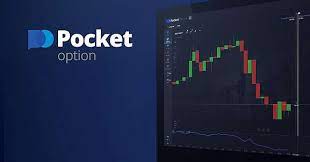
Pocket Option Chart Setup and Analyses
When it comes to trading on Pocket Option, having a clear understanding of chart setup and analysis is crucial. A well-configured chart can provide valuable insights, enhancing your trading strategies. In this guide, we will explore effective Pocket Option Chart Setup and Analyses Pocket Option Настройка и аназиз графиков methods and explain how to utilize them for better trading outcomes.
Understanding the Basics of Pocket Option Charts
Pocket Option is a user-friendly platform that offers a variety of chart types catering to different trading styles. Familiarity with the basic components of the charts will help you interpret market movements accurately. The primary types of charts available are line charts, candlestick charts, and bar charts.
Line Charts
Line charts are the simplest form of charting. They display price movements over time by connecting closing prices with a continuous line. This chart type is beneficial for identifying the overall trends in the market but lacks detailed information about price volatility.
Candlestick Charts
Candlestick charts provide a detailed view of market behaviour. Each candlestick represents price movement within a specified timeframe, displaying the opening, closing, high, and low prices. Learning to read candlestick patterns is essential for identifying potential market reversals and continuation signals.
Bar Charts

Similar to candlestick charts, bar charts display the open, close, high, and low prices over a specific period. However, they use vertical bars to represent price movements, which may be less intuitive for some traders. Bar charts can be effectively used in conjunction with other indicators to confirm trading signals.
Setting Up Your Charts on Pocket Option
Setting up your charts correctly is critical to successful trading. Here are the steps to create an effective chart setup on Pocket Option:
- Select Your Chart Type: Depending on your trading strategy, choose between line, candlestick, or bar charts. Most traders prefer candlestick charts due to their detailed insights.
- Configure Indicators: Indicators such as moving averages, RSI (Relative Strength Index), and MACD (Moving Average Convergence Divergence) can enhance your trading decisions. Set indicators that align with your strategy.
- Adjust Timeframes: Different timeframes can offer varied insights. Day traders often use shorter timeframes (1 minute to 15 minutes) while swing traders might prefer longer ones (1 hour to daily).
- Use Support and Resistance Levels: Identifying key support and resistance levels on your chart can signal potential entry and exit points.
- Save Your Setup: Once satisfied with your chart configuration, save it for future use to ensure consistency in your trading process.
Analyzing Charts Effectively
Chart analysis is not only about recognizing trends; it encompasses various techniques that can aid in predicting price movements. Here are essential elements to include in your analysis:
Trend Analysis
Identifying trends is a fundamental aspect of technical analysis. Trends can be upward, downward, or sideways. To confirm a trend, use trendlines or moving averages which can help visualize the market direction. Traders often look for confirmation through multiple timeframes.

Pattern Recognition
Chart patterns such as head and shoulders, double tops, and triangles can indicate potential price movements. Understanding these patterns can significantly improve your chances of making profitable trades.
Volume Analysis
Volume is an important indicator that reflects the strength of a price movement. Analyzing volume in conjunction with price movements can provide insights into market sentiment and the sustainability of a trend.
Best Practices for Chart Setup and Analysis
To maximize your trading effectiveness on Pocket Option, adhere to these best practices:
- Stay Consistent: Utilize the same chart setup for a particular trading strategy to enhance your decision-making process.
- Practice Risk Management: Always define your risk tolerance and use stop-loss orders to protect your capital against unforeseen market movements.
- Maintain a Trading Journal: Document your trades, strategies, and results. Regularly reviewing your journal can highlight patterns in your trading behaviour.
- Educate Yourself: The forex and binary options markets are constantly evolving. Invest time in learning new strategies and keeping abreast of market changes.
Conclusion
Setting up and analyzing charts on Pocket Option is a skill that can significantly enhance your trading experience. By understanding different chart types, configuring them correctly, and implementing effective analysis techniques, you can make more informed trading decisions. Remember that successful trading requires continuous learning and adaptability to changing market conditions. Implement these strategies as you embark on your trading journey on Pocket Option for better results.
0 Comments